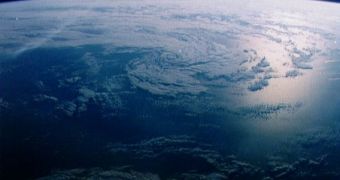More than 770 extrasolar planets have been confirmed to date, and this large number is beginning to make it clear to astronomers that their chances of finding water on some of these worlds are steadily increasing. A team of experts now proposes a new model for doing so.
Many planets have already been detected inside, or in close proximity to, the habitable zone of their parent stars, which is the region inside these star systems where temperature ranges are just right to support the presence of liquid water.
It stands to reason that the planets in these regions may have liquid water at their surface. The issue then becomes developing a detection method for identifying which of these worlds has oceans of liquid water similar to Earth's.
This is not an easy task, since not many exoplanets from the confirmed group are located close enough to our world to enable astronomers to observe their surfaces directly. This is why experts now propose using the planets' glint, or albedo, so search for signs of water at their surface.
These glints are caused by starlight reflecting onto the surface of the water. Satellites in orbit around Earth, for example, can observe this phenomenon on our planet with ease. Now, astronomers need to develop spacecraft capable of identifying similar occurrences on exoplanets as well.
According to Astrobiology Magazine, the albedo of a distant world should chance during the planet's crescent phase, if an ocean is present at its surface. This approach was proposed by Northwestern University experts, who were led by Nicolas Cowan.
“Astronomers are keen to figure out how to detect oceans on exoplanets, because biologists assure us that liquid water is necessary for life as we know it. The challenge is that exoplanets are very far away, so at best they appear as Carl Sagan's proverbial ‘pale blue dot’,” the team leader explains.
“The crux is that the light we see from a planet at crescent phase is hitting the planet at a glancing angle. What kinds of places receive glancing sunlight?” he goes on to say.
“You might be catching a region right at dusk or dawn, but more likely you are seeing a cold place, since glancing sunlight is precisely what makes a place cold. Low temperatures mean the surface is more likely to be covered in snow and ice,” Cowan adds.
Details of the new model appear online in the journal arXiv, and have also been accepted for publication in an upcoming issue of the Astrophysical Journal.

 14 DAY TRIAL //
14 DAY TRIAL //